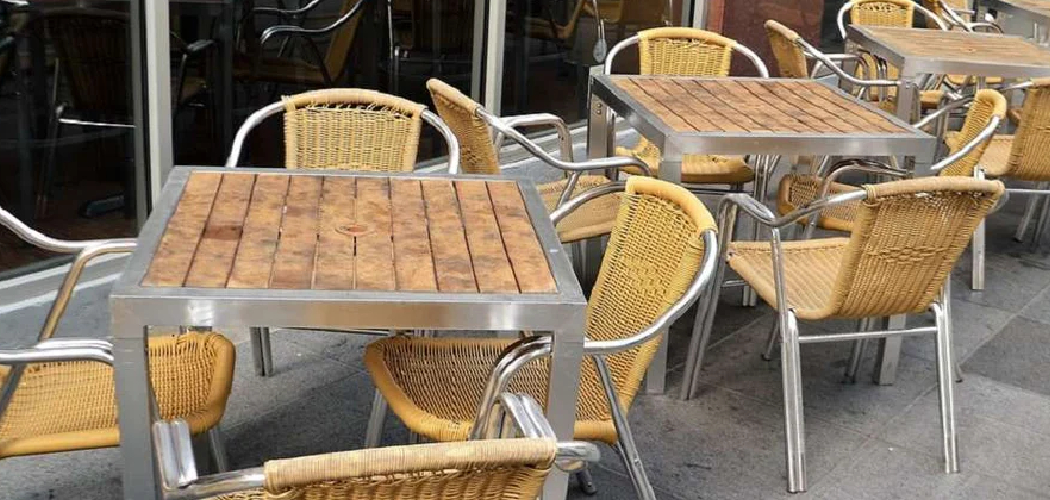Outdoor wicker furniture is a stylish and versatile addition to any garden, patio, or balcony, offering both comfort and a touch of natural elegance. However, exposure to the elements can quickly deteriorate these pieces, making it essential to implement proper protective measures.
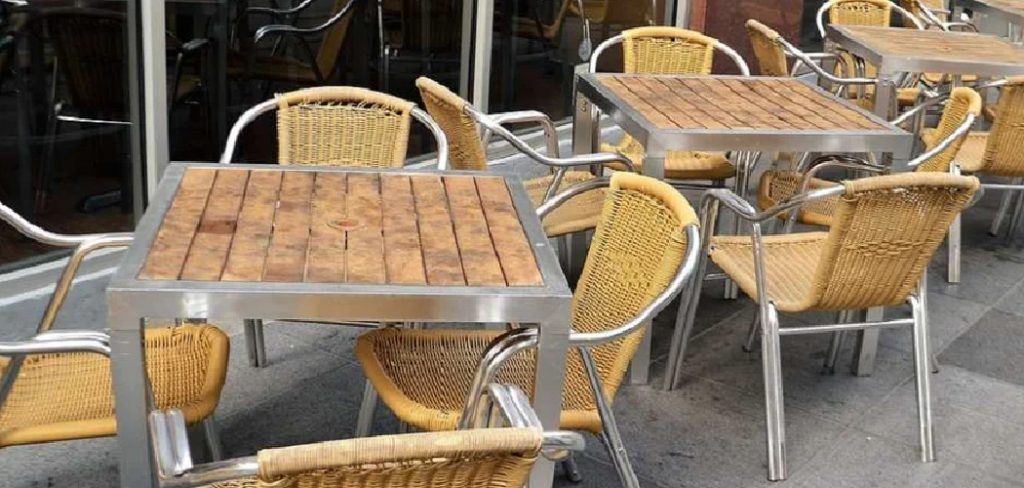
Understanding how to protect outdoor wicker furniture involves a combination of preventive care and regular maintenance. From shielding it from harsh weather conditions to employing effective cleaning techniques, safeguarding your wicker furniture ensures its longevity and sustained beauty. Whether your wicker is made from natural rattan or synthetic resin, taking the right steps can prevent fading, cracking, and weakening of the material.
This guide will delve into practical strategies for maintaining the pristine condition of your outdoor wicker furniture, covering everything from weatherproofing and appropriate storage solutions to routine cleaning and repair tips. With the right care, your outdoor wicker pieces can remain a charming and durable part of your outdoor living space for many years to come.
Understanding Outdoor Wicker Furniture
Outdoor wicker furniture is crafted from materials specifically designed to withstand the rigors of outdoor environments. Traditional wicker furniture is often made from natural rattan, a vine-like plant known for its flexibility and strength.
However, the rise in popularity of outdoor living spaces has seen a surge in the use of synthetic resin wicker, which mimics the look of natural wicker but offers enhanced durability and resistance to the elements. Synthetic wicker is typically made from polyethylene or other high-density plastics, providing a weather-resistant and low-maintenance option for outdoor use.
Natural rattan wicker, while aesthetically pleasing and eco-friendly, requires more meticulous care to protect it from moisture, UV rays, and temperature fluctuations. Synthetic wicker, on the other hand, can endure exposure to sun and rain without significant degradation, making it a more practical choice for outdoor settings.
Understanding these material differences is crucial when selecting and caring for wicker furniture, as each type requires tailored protective and maintenance strategies to ensure longevity and sustained visual appeal.
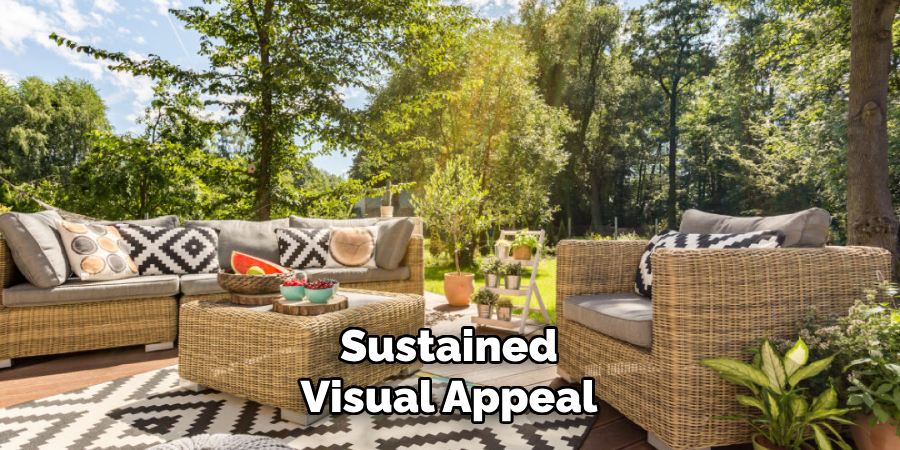
10 Methods How to Protect Outdoor Wicker Furniture
1. Regular Cleaning
Regular cleaning is fundamental to maintaining the integrity and appearance of outdoor wicker furniture. Dust, dirt, and debris can accumulate in the crevices of wicker, leading to potential wear and damage. Start by dusting off loose particles using a soft brush or a vacuum cleaner with a brush attachment. For a more thorough clean, use a mixture of mild soap and water.
Gently scrub the wicker with a soft cloth or sponge, being careful not to saturate the material, especially if it’s natural wicker, which is susceptible to moisture. Rinse with a damp cloth and allow it to air dry completely before using or covering the furniture. This routine not only enhances the furniture’s appearance but also prevents the buildup of potentially damaging substances.
2. Applying a Protective Sealant
Applying a protective sealant is a proactive measure to shield wicker furniture from moisture and UV damage. Natural wicker, typically made from rattan, reed, or bamboo, is especially vulnerable to the elements. A quality sealant designed for outdoor use can create a barrier that repels water and protects against UV rays, which can cause fading and brittleness.
Before applying the sealant, ensure the furniture is clean and dry. Spray or brush the sealant evenly over the entire surface, paying special attention to joints and crevices. Reapply the sealant every year or as recommended by the manufacturer to maintain optimal protection.
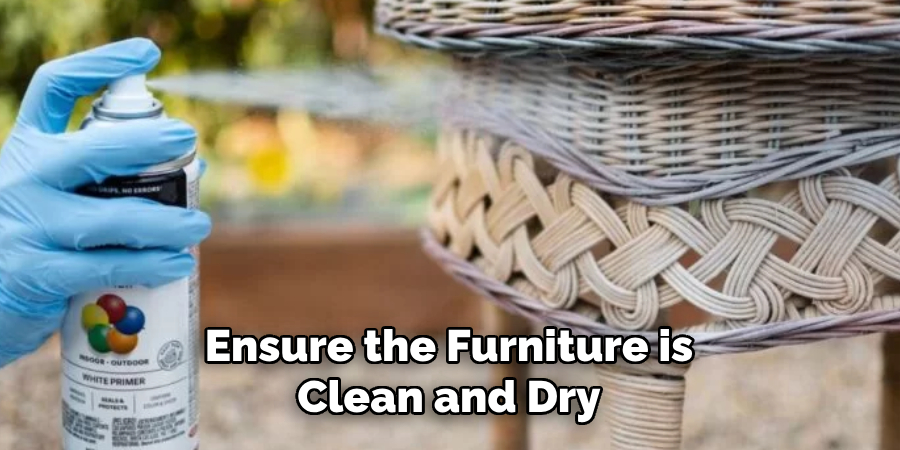
3. Using Furniture Covers
Furniture covers offer an effective defense against weather conditions that can deteriorate outdoor wicker furniture. Invest in high-quality, waterproof covers that fit your furniture snugly. These covers should be made of breathable material to prevent mold and mildew growth, which can occur if moisture gets trapped underneath.
Use the covers whenever the furniture is not in use, especially during inclement weather or the off-season. Secure the covers tightly to prevent them from blowing away in strong winds. By shielding the furniture from rain, snow, and intense sunlight, covers can significantly extend the lifespan of your wicker pieces.
4. Strategic Placement
The placement of outdoor wicker furniture plays a crucial role in its longevity. Position the furniture in a location that provides some protection from the harshest elements. Under a covered patio, pergola, or within the shade of trees, wicker furniture is less exposed to direct sunlight, which can cause fading and weakening of the fibers.
If your space doesn’t have natural shade, consider installing a canopy or umbrella. This not only protects the furniture but also creates a comfortable, shaded area for relaxation. Avoid placing wicker furniture directly on grass or soil, where moisture can wick up into the legs and cause rot. Instead, use paved or decked areas, or add protective feet to elevate the furniture slightly off the ground.
5. Bringing Furniture Indoors During Extreme Weather
While outdoor wicker furniture is designed to withstand the elements to some extent, extreme weather conditions can still cause significant damage. During heavy rains, snowstorms, or severe winds, it’s best to bring wicker furniture indoors if possible. A garage, shed, or even a basement can serve as temporary storage to protect the pieces from the harsh weather.
If moving the furniture indoors is not feasible, ensure it is covered securely and placed in a sheltered area. This precaution can prevent structural damage and prolong the life of your outdoor wicker furniture.
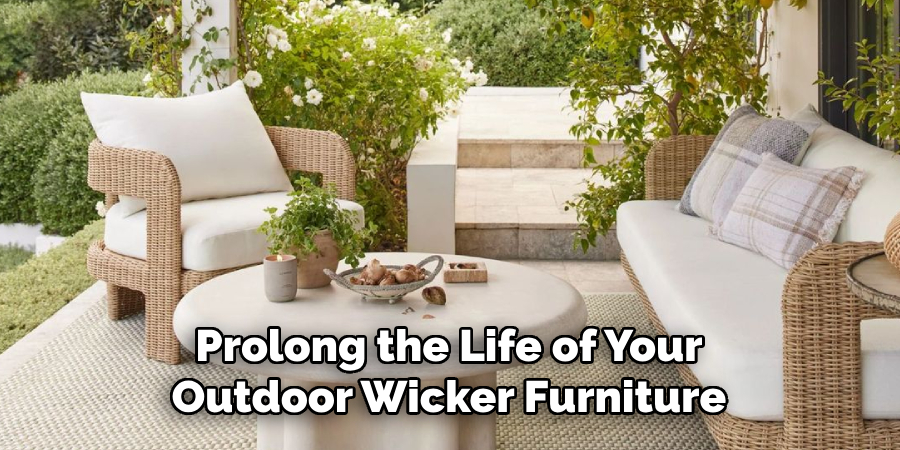
6. Rotating Cushions and Accessories
Accessories like cushions and throws add comfort and style to wicker furniture but can also contribute to wear and tear. To minimize this, rotate and flip cushions regularly to ensure even usage and exposure. This practice helps to prevent one side from becoming excessively worn or faded.
Choose cushions made from weather-resistant fabrics that can withstand outdoor conditions. When not in use, store cushions and other accessories in a dry, shaded area or in weatherproof storage boxes. Regular maintenance of these items complements the care of the wicker furniture, keeping the entire set looking fresh and inviting.
7. Avoiding Excessive Weight and Pressure
Outdoor wicker furniture is designed for relaxation and moderate use, not for bearing heavy weights or excessive pressure. Avoid standing on wicker chairs or tables, and do not place heavy objects on them. The intricate weave of wicker can be damaged or distorted by undue stress, leading to a weakened structure. Encourage children to treat the furniture gently, and remind guests of its intended use. By respecting the weight limitations and design purpose of wicker furniture, you help preserve its form and function over time.
8. Repairing Minor Damages Promptly
Minor damages, such as loose strands or small breaks in the wicker weave, should be addressed promptly to prevent further deterioration. For small repairs, use a clear-drying glue specifically designed for wicker. Apply the glue carefully to the damaged area and press the strand back into place.
For more extensive repairs, consider consulting a professional who specializes in wicker furniture restoration. Regularly inspect your furniture for signs of wear and repair any issues as soon as they arise. This proactive approach helps maintain the structural integrity and aesthetic appeal of your wicker pieces.
9. Repainting and Staining
Over time, the paint or stain on outdoor wicker furniture may fade or chip due to exposure to the elements. Repainting or restaining the furniture can revitalize its appearance and provide an additional layer of protection. Choose a paint or stain that is suitable for outdoor use and compatible with wicker material.
Before applying, clean the furniture thoroughly and sand any rough or peeling areas to ensure a smooth surface. Apply multiple thin coats for even coverage, allowing each coat to dry completely before applying the next. This process not only enhances the visual appeal of the furniture but also seals the wicker, offering added defense against weathering.
10. Regular Inspections and Maintenance
Consistent inspections and maintenance are vital for the longevity of outdoor wicker furniture. Set a routine schedule to check your furniture for any signs of damage, wear, or potential issues. Look for loose strands, weakened joints, and areas where the finish may be wearing thin.
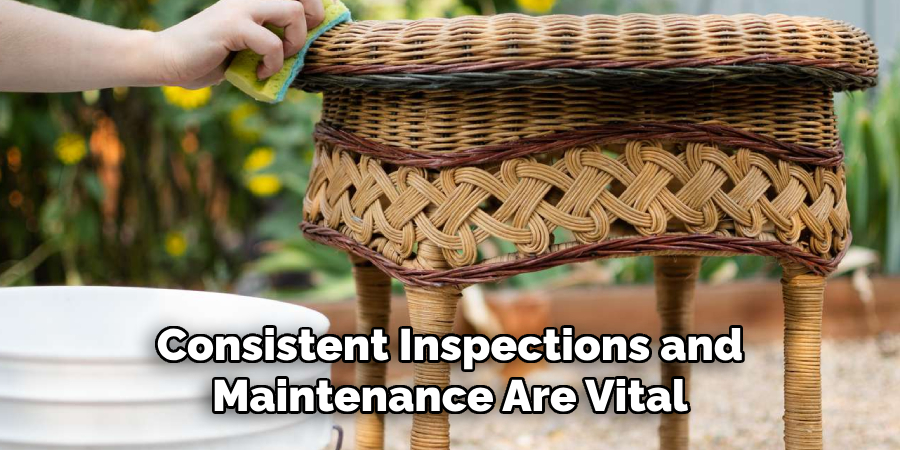
Address any concerns immediately to prevent them from escalating. Incorporate cleaning and protective measures into your maintenance routine to keep the furniture in optimal condition. By staying vigilant and proactive, you can enjoy your outdoor wicker furniture for many years, ensuring it remains a beautiful and functional addition to your outdoor living space.
Conclusion
Outdoor wicker furniture is a charming and versatile addition to any outdoor setting, but it requires careful maintenance to protect it from the elements. By implementing these ten methods—regular cleaning, applying protective sealants, using furniture covers, strategic placement, bringing furniture indoors during extreme weather, rotating cushions, avoiding excessive weight, repairing minor damages promptly, repainting and staining, and conducting regular inspections—you can extend the life and beauty of your wicker furniture.
Thanks for reading, and we hope this has given you some inspiration on how to protect outdoor wicker furniture!
